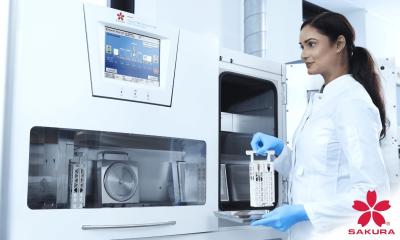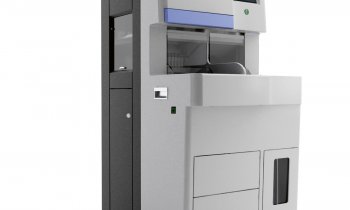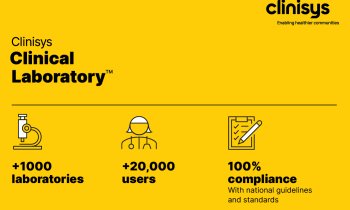Machine vision technologies
A group of technologies that can replace human inspection are entering the clinical arena, writes Charles D Hawker PhD MBA FACB, Scientific Director of Automation and Special Projects at ARUP Laboratories and Associate Professor of Pathology (Adjunct), University of Utah School of Medicine in Salt Lake City
In today's clinical laboratory the technical staff performs quality inspections that are separate and distinct from normal laboratory testing quality control.

These inspections include checking if the specimen type is correct for the ordered test or at the correct temperature, verifying that it is from the correct patient by comparing the doctor’s office label to the laboratory’s label, or inspecting specimens for clots, fibrin, haemolysis, icterus, or lipaemia. Systems that have been used in industrial settings for the past two decades are now starting to make their way into clinical laboratory automation. Generally known as machine vision, this is a group of technologies that can replace human inspection.
Practically every product you purchase today is assembled and packaged with greater efficiency and quality due to machine vision technology. In pharmaceutical plants, sophisticated optical systems inspect bottles on conveyors to ensure labels are straight and cap seals uniform and tight. They read lot numbers and expiration dates, comparing them to what is expected, and assure there are no red pills in bottles of white pills. In breweries, wineries, and other bottling plants, machines check fill levels, rejecting under-filled cans or bottles on conveyors at speeds 50-100 times faster than today’s fastest laboratory automation conveyors.
Depending on the particular plant, fill levels are checked by weight, with gamma rays or X-rays, or other systems. Other systems make sure there are no glass shards in jars of marmalade. The list is endless. These virtually 100% accurate, high speed inspections are simply not possible with human inspectors.
Laboratory automation manufacturers are beginning to employ machine vision to improve quality and replace human inspection. Some optical systems inspect tubes for cap colour, height, and diameter. Some inspect through the open side of a tube (if it is not completely covered with a label) and determine presence and degree of haemolysis, lipaemia, or icterus. At least two systems can ‘peer’ through the labels on a closed tube, determine the height of packed red cells, and calculate the volume of serum or plasma above the cells. This information can be used to verify correctness of the specimen for an ordered test, prompt a report comment, or set aside the tube for manual intervention. The latter step is more valuable than it sounds. If 95% of tubes pass an automated inspection, then the technologist only has to handle 5% instead of 100% to determine the next step.
Two decades after automobile assembly plants and other manufacturers began to use automation robotics, Japanese laboratorians began to apply automation concepts, but it was another decade before early Japanese automation ideas for clinical laboratories appeared in systems from laboratory equipment vendors. Similarly, machine vision systems have now been in place in industrial settings for at least two decades, although much faster and more sophisticated today than in the early years. Nevertheless, it seems interesting to this observer that, once again, the clinical laboratory is roughly 20 years behind in applying industrial technologies that could have real value in the laboratory setting.
01.07.2008











